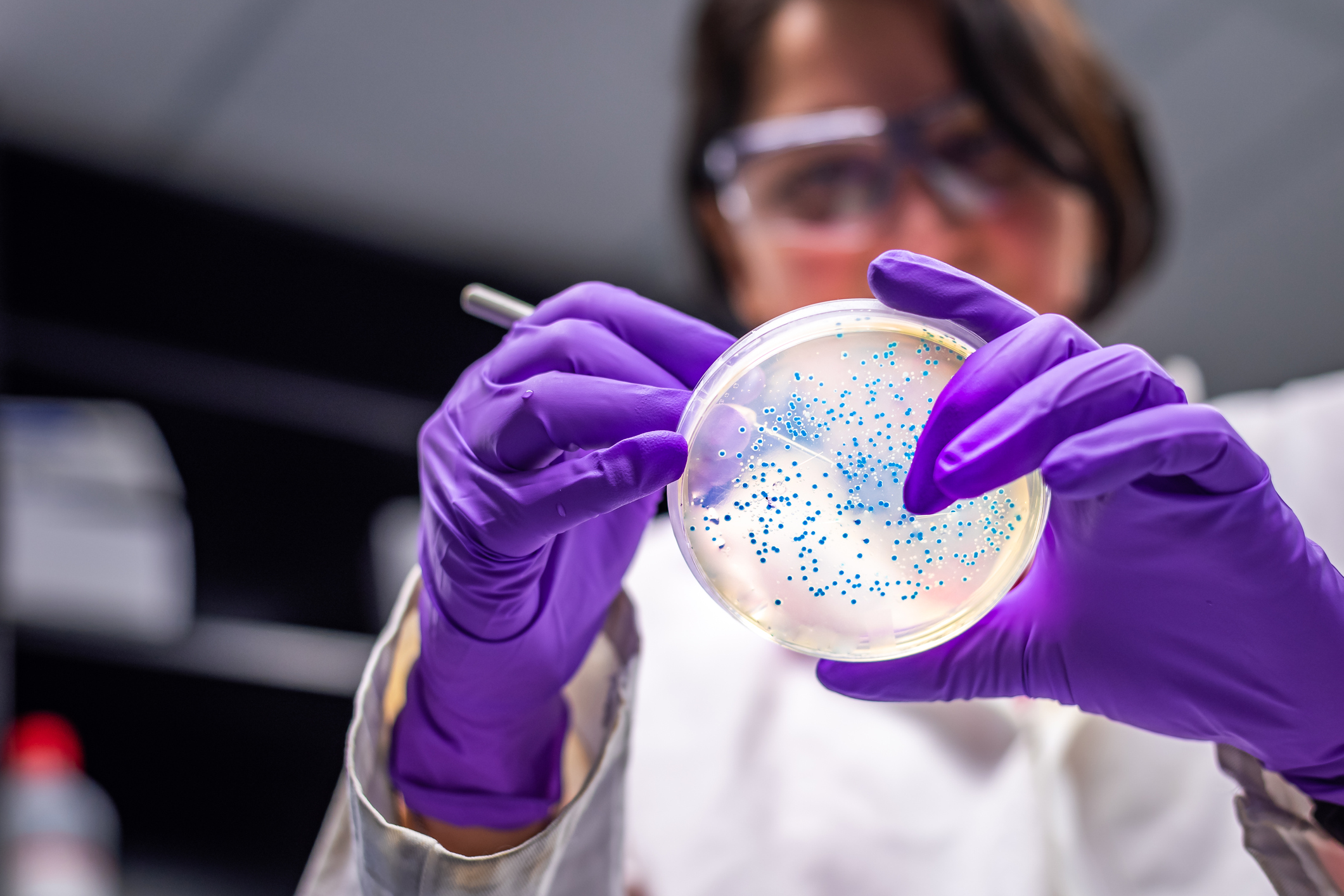Lead image by Prostock-Studio / iStock
By Elizabeth Kane
Iron is essential to human life. Iron deficiency is associated with a variety of health problems, including fatigue, poor sleep, reduced strength and impaired cognition.

Prof. Kristin Connor
If left untreated, a low level of iron can cause iron deficiency anemia – a condition where the body struggles to create enough hemoglobin for its red blood cells, which are responsible for carrying oxygen to muscles and tissues.
It is more common in women than in men. The World Health Organization estimates that nearly 30 per cent of reproductive age women have iron deficiency anemia.
Addressing iron deficiency early is critical for good health for people at all stages of life, and especially before pregnancy.
“About 50 per cent of pregnant people worldwide have iron deficiency, and this has adverse impacts for the pregnant person and their fetus,” says Carleton University Prof. Kristin Connor, who runs the Connor Lab in the Department of Health Sciences.
“This includes increased risk for preterm birth, low birthweight and neurologic impairments of the baby. In the mother, it can affect the functioning of the cardiopulmonary system, as well other adverse pregnancy outcomes.”
Current health recommendations for iron deficiency include taking an iron supplement, usually via a pill or powder. Traditional supplements can have negative side effects for individuals’ gastrointestinal systems, and unpalatable taste, which can discourage patients from using these treatments.
To address this challenge and improve health outcomes for reproductive aged women, Connor’s Lab is examining new options for treating and preventing iron deficiency.

Food Fortification System to Address Iron Deficiency
The Connor Lab is focused on human development, maternal and child health, and novel interventions – helping to determine what factors can shape our path towards health and disease risk throughout our lifecycles.
Connor’s team is conducting a randomised controlled trial of a novel, at-home iron food fortification system. Participants will consume a beverage fortified with a unique formulation of low-dose iron and zinc over six months, complete questionnaires, and have their blood tested to assess their iron levels. This is the first step to ensure it is effective before studying it during pregnancy. The research team is actively enrolling participants.
Food fortification is the process of adding vitamins or minerals to a food to improve public health. An example is the addition of Vitamin D to milk which has eliminated rickets in Canadian children.

gpointstudio / iStock
Graduate student Clara Miller and postdoctoral fellow Jessie Burns from the Connor Lab are looking at how the fortification system can be used to address low iron levels, while avoiding negative impacts of existing supplementation methods, including unpleasant taste and digestive issues. The formulation being studied minimally effects taste and contains food stabilizers to keep the beverage enjoyable for an extended period of time after mixing – a common problem with powder supplements.
“Food fortification is a really important tool to treat and prevent iron deficiency because it can alleviate or circumvent many side effects of supplementation, while having higher acceptability and palatability,” says Connor.
“This means that food fortification has the potential to reach more people for improved health benefits.”

Study Investigates Microbiome and Iron
Graduate student Hauna Sheyholislami in the Connor Lab is studying what role participants’ gut microbiome plays in their iron levels and their response to either the treatment or its placebo.
“Diet is one of the most influential factors on the gut microbiome, because what we eat also serves as food for the community of microbes that live in our guts,” says Connor. “In the global north, we’re taking in more highly processed foods, fewer foods that are high in fibre, fewer fermented foods, and our gut microbiome is changing as a result of that.”
The microbes in our gut help to produce and metabolize important nutrients, such as iron and B vitamins. Connor notes that while animal studies have shown relationships between mineral deficiencies and changes in the gut microbiome, fewer studies have examined this in humans.
“We think that the microbiome plays a role in iron status, and that it may help explain why some individuals respond well to treatment while others may not,” says Connor. “This will be really critical in filling gaps we have on our understanding of female biology, the origins and the progression of iron deficiency in women – which can inform future healthcare practice.”

Improved Treatment Design Through Research
Looking ahead, Connor believes that the studies have the potential to uncover biomarkers that could improve risk stratification – identifying who is at increased risk for a condition or what interventions may be most effective.
“That might be a fortification intervention, it might be a nutritional intervention, it might be supplementation, or a complementary approach” explains Connor. “But we really think that the microbiome and other aspects of an individual’s physiology interact to determine a person’s risk as well as response.”
“Understanding the role of the microbiome in health and disease states is a new area of research,” says Connor. “Our work hopes to give more complete insight into microbial and iron physiology in women with iron deficiency.”
Her team, with graduate student Olivia Wilding-Davies, is also participating in research in Benin with CARE Benin-Togo, Lucky Iron Life, and others, to take a whole-of-community approach to iron deficiency.
“We aim to aim to help communities, NGOs and governments design and implement interventions for iron deficiency and anemia, and scale their use across the country. This ensures those who stand to benefit from these interventions have a say in their design and delivery, and trust and use the tools to achieve sustainable health improvements.”
Thursday, February 8, 2024 in Health, IWD 2024, Science
Share: Twitter, Facebook



